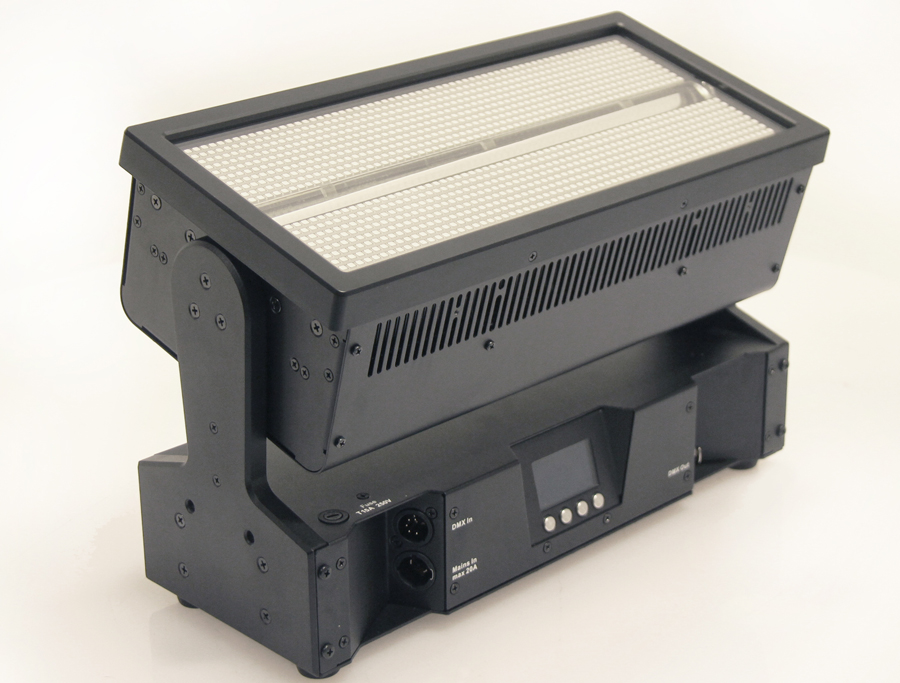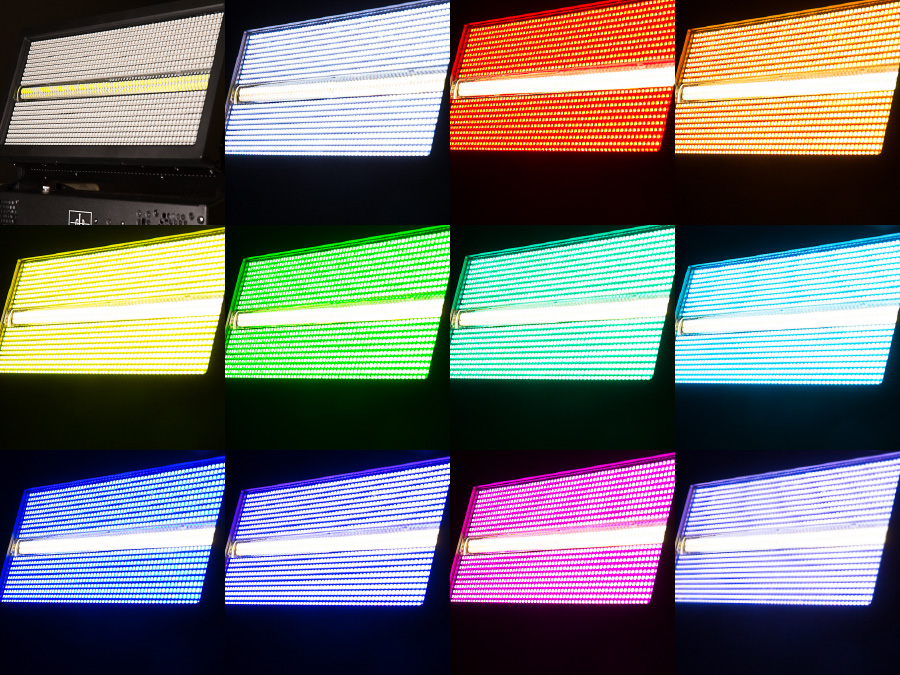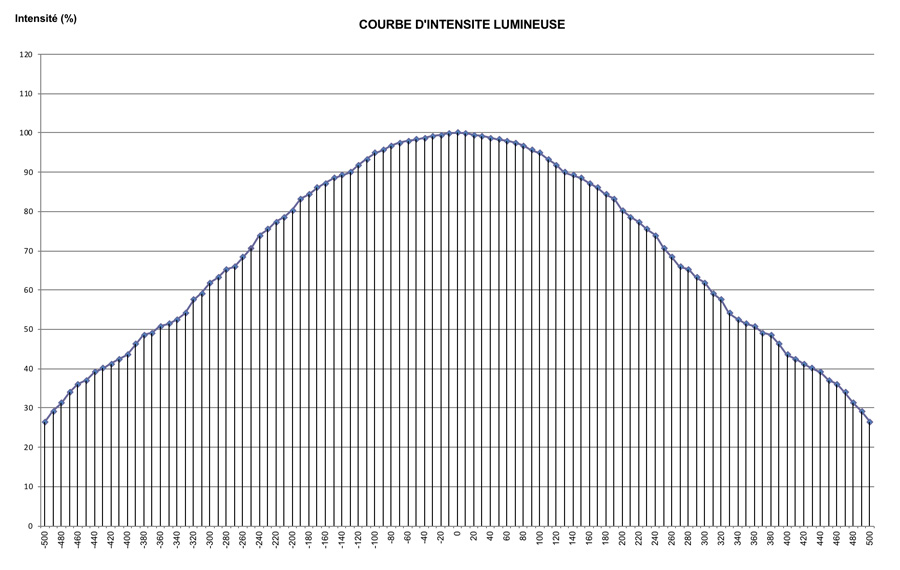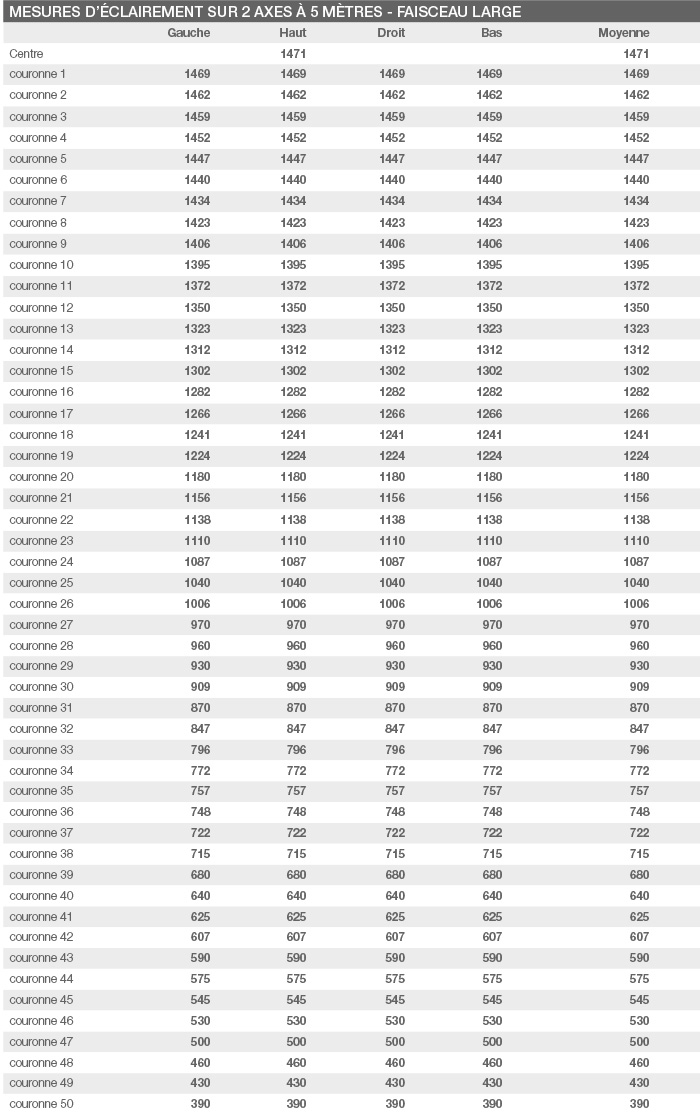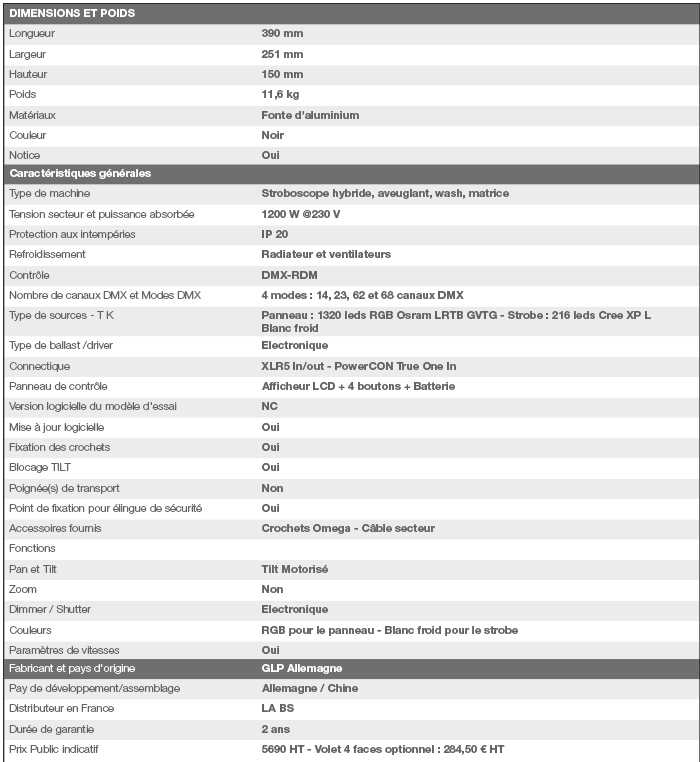GLP proposes a fixture that looks like a strobe, and has the power and functions of a strobe, but it’s actually much more. In a world where products are similar to each other, it is important to be different, to be original and, especially, to provide added value compared to competitors. Here we offer you a new, more visual kind of product test with a detailed video presentation of the unit below.
Diversity
More than just an effect, the German brand proposes this 3-in-1 fixture: a strobe, a wide and uniform RGB source and a moving light. 1536 LEDs are distributed on two sources. In the center to simulate the xenon tube, 216 cold white Cree XP LEDs are arranged on a line of 12 individually controllable cells.
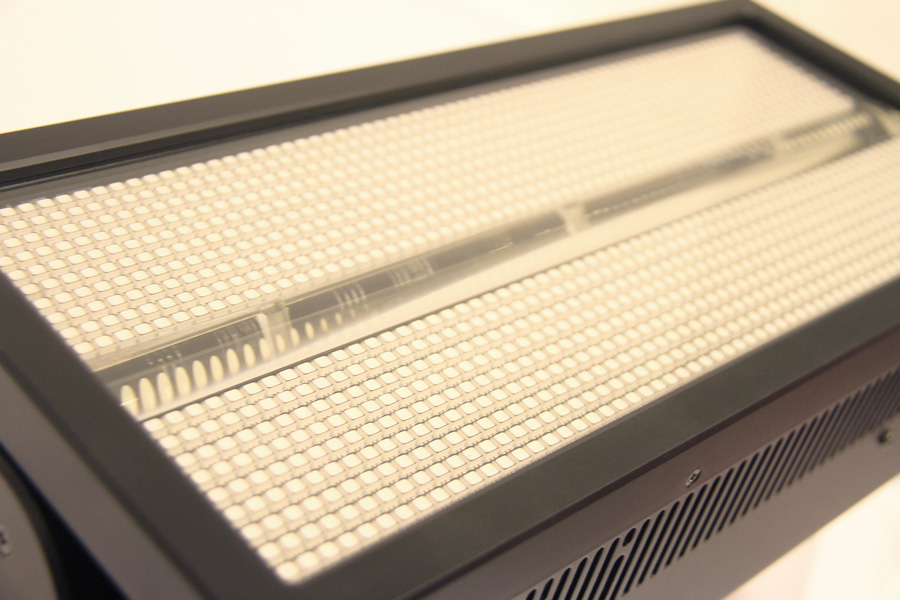
Above and below this, there are 12 (2 x 6) square cells of 1320 Osram LRTB GVTG RGB LEDs that produce a wide field of light that can be used to cover a stage, highlight the walls of a room or illuminate a set.
As each of these 12 elements is individually controllable, you can also use these sources to create dynamic dimmer or color effects, but also – thanks to the value shift functions or the matrices of a console – to create lovely gradients or beautiful moirés quite simply.
The colors are beautiful. The mixture of the three primaries is homogeneous and allows for a very wide color palette. Whether in saturated colors or pastels, the fixture is a great performer. This lets you add a more conventional use to the JDC1’s primary function as an effects fixture.
To make this fixture even more attractive and versatile, the engineers at GLP have motorized the head on one axis. This makes it possible to use the JDC1 for blinding, downlights and set lighting at the same time. Of course, the other very interesting possibility is to create a matrix of several JDC1s and play off the matrix of each unit in a much larger matrix to create static or dynamic visuals or images.
A video presentation of the JDC1 by Stéphane Mocret
Control
There are five control modes. The first of these, with 14 channels, allows simple access to the strobe and color functions without individual cell control. However, it is possible to create effects with the 12 pixels of the central line and the 12 cells of the plate using the two channels of effects dedicated to the strobe and colors.
Choosing the most extended mode of 68 channels, each pixel of the fixture can be controlled independently. There are enough choices and possibilities to use this fixture on any kind of performance and with any console. The JDC1 is easy to control, but still requires a little practice for managing the internal effects and especially creating a well-developed library.
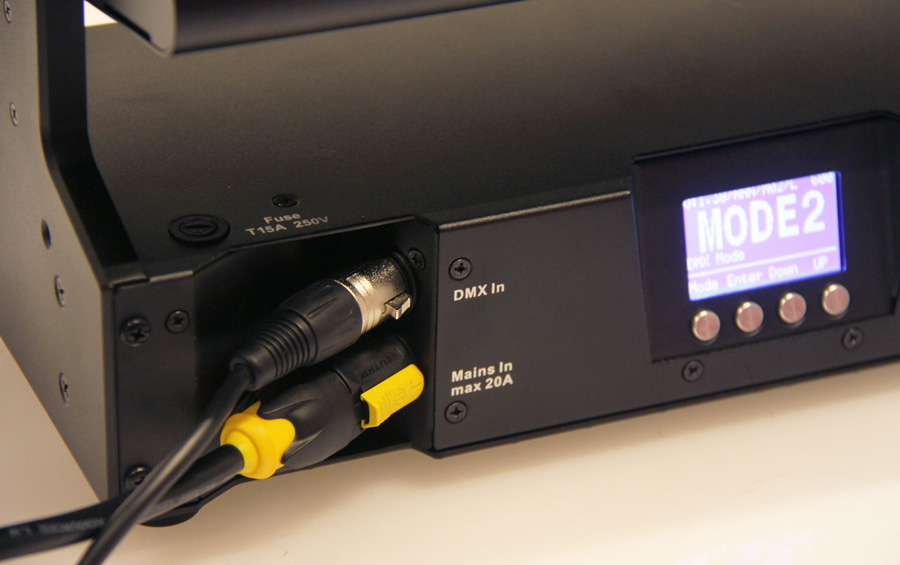
You’ll need to make sure that the functions common to one type of parameter are not scattered over several pages or types of parameters. Also make sure that the three main strobe parameters are on consecutive encoders and that the effect parameters and their controls are close by or easily accessible.
Even if the internal solution is often simpler, faster and less demanding in terms of DMX channels, I configure the fixtures, whenever possible, to the maximum of their possibilities so that I am not taken by surprise and, above all, so that I can create my effects myself. This avoids having to look for the closest one and allows you to always have the desired effect and a creation that you won’t find on another show.
Light output
Of course, the JDC1 is an effects fixture and therefore some of the measurements are neither useful, interesting or even comparable with a more traditional light. We have therefore chosen the 12 RGB cells, without powering the LED bar that simulates the xenon tube, to obtain a series of results more in line with its use as a light source.
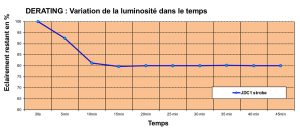
The set list doesn’t change: we start with the derating. We measure 1980 lux in the center when the unit is cold and 1913 lux after 30 seconds (reference measurement) the light stabilizes after 20 minutes of heating to 1530 lux, which corresponds to a derating of 20%. This is a good result for an effect projector.
It should also be kept in mind that the projector is being tested under the most difficult conditions in full white RGB. In color the derating will be negligible.
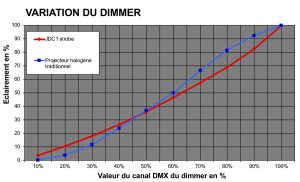
Just to keep you in some suspense, I’m going to continue with the dimmer curve. Linearity is not a strong point of this curve.
It’s not very important since we’re using a computerized dimmer control, all JDC1s have the same curve and the transitions are therefore consistent. Even if the progression is not perfectly linear, there is no sudden variation, so there is nothing irremediable in 99.9% of the uses of this unit.
The last series of measurements, of course, concerns the flux measured up to I/10 (one tenth of the center intensity). Our result is not completely accurate because our target is five meters wide and the I/10 illuminance, i.e. 150 lux, lies beyond five meters. We still measure 390 lux at the edge of the target and obtain a flux of 65,300 lumens after derating and 81,600 lm with the unit cold, for a 90° angle. This is an excellent result.
If we venture an approximation based on the slope of the luminous intensity curve, the flux at I/10 should reach 66,000 lumens after derating and 82,500 lm when cold, for an angle of 98°. This surface of LEDs therefore provides strong coverage over a very large area. The luminous intensity curve is quite regular and this is a good surprise for an effects fixture.
Red represents 29.47% of the total flux, green 28.8% and blue 6.83%, which, in relation to the total flux, yields beautiful warm, luminous colors.
The whole package
The JDC1 is a very powerful and complete hybrid effects fixture. The combination of two types of sources on a motorized axis increases the range of possibilities for lighting designers and ensures faster profitability for lighting companies.
It should also be noted that GLP is one of those brands which, in order to fight against low-end and cheap competition, have been able to evolve by producing well-finished, high-performance products at an attractive price. In short, if you’re looking for a LED source that can create powerful and pixelated strobe effects, color a stage, highlight a set or a venue, and create a color matrix, the JDC1 is for you.



